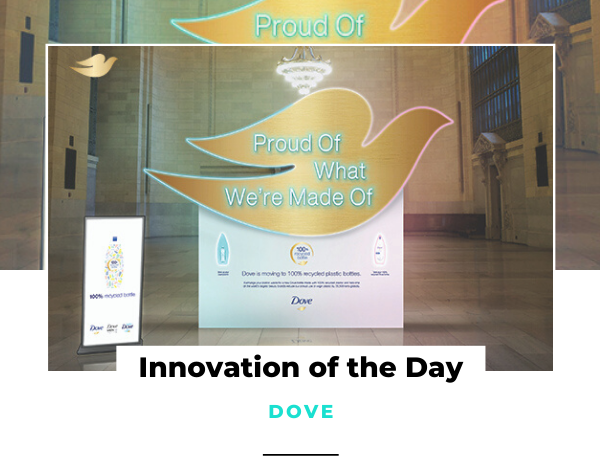
Two weeks ago, personal care brand Dove installed a vending machine in NYC’s Grand Central Station that accepted used plastics as payment for a bottle of body wash. To reduce its use of virgin plastics, Dove now uses bottles made from 100% recycled plastic. As part of its ‘Proud of What We’re Made Of’ installation, visitors could deposit a piece of used plastic in a vending machine and receive a bottle of Dove Body Wash in its new recycled plastic packaging. The vending machine itself was made from wood and aluminum and powered by a solar-charged lithium-ion battery. The campaign is also part of part company Unilever’s corporate goal to reduce virgin plastic packaging by half by 2025, and collect and process more plastic than it sells.
At TrendWatching, we love vending machines that take plastic as currency! Here’s why:
End of Excess. According to nonprofit Break Free from Plastic’s 2019 Brand Audit, Unilever (Dove’s parent company) was found to be the fifth highest plastic polluter during a global ocean clean-up, with 3,328 pieces of its plastic found in 21 countries. Coca-Cola was responsible for almost four times as much! Findings like this will only intensify pressure on every brand, big and small, to act. Moves such as this one from Dove, and plenty of others – see how Air New Zealand introduced edible coffee cups in its lounges and planes – will raise expectations that all brands embrace the END OF EXCESS and put an end to single-use and ephemeral products. It’s past time to ask yourself: ephemeral or wasteful – plastic or otherwise – in our core offering? How can we change that?
Currencies of Change. Releasing a more eco-friendly version of your product is great and much needed. But if consumers don’t know about this alternative, or if they aren’t buying/using/opting for it, then what good is it? Dove’s vending machine initiative helps tackle this issue, by incentivizing consumers to try the new eco-friendly bottles – in the hope that knowing about and experiencing the product first hand will make customers more likely to continue using it in the future. The underlying challenge for you: how could you incentivize consumers to switch to your more ethical or sustainable alternative?
Want to receive B2C innovations, every weekday, straight to your inbox?
Received daily by 100k+ business professionals in 180+ countries.
Read now »
More innovation updates on these channels!









